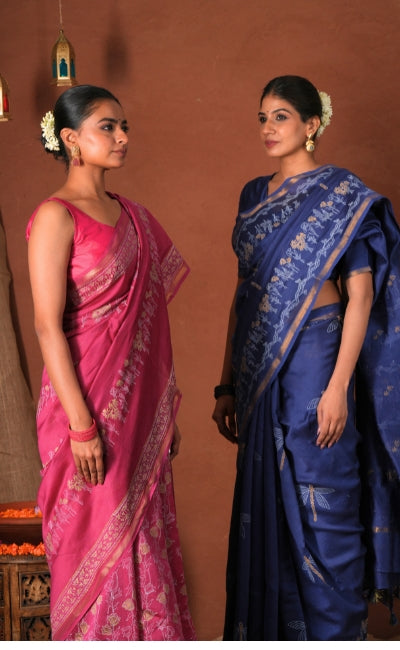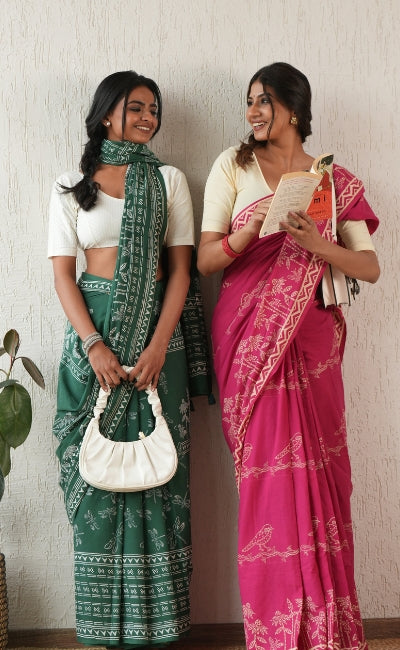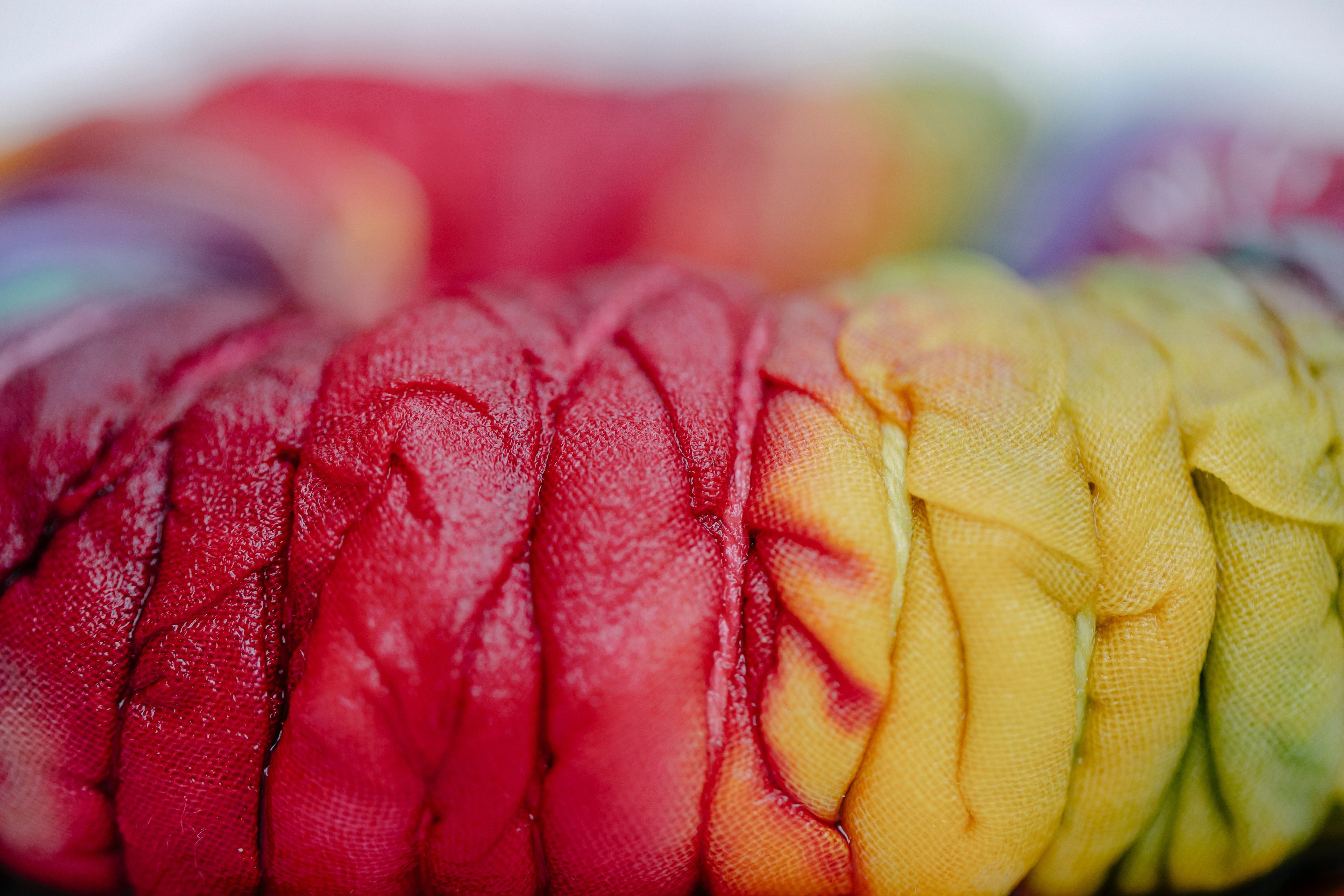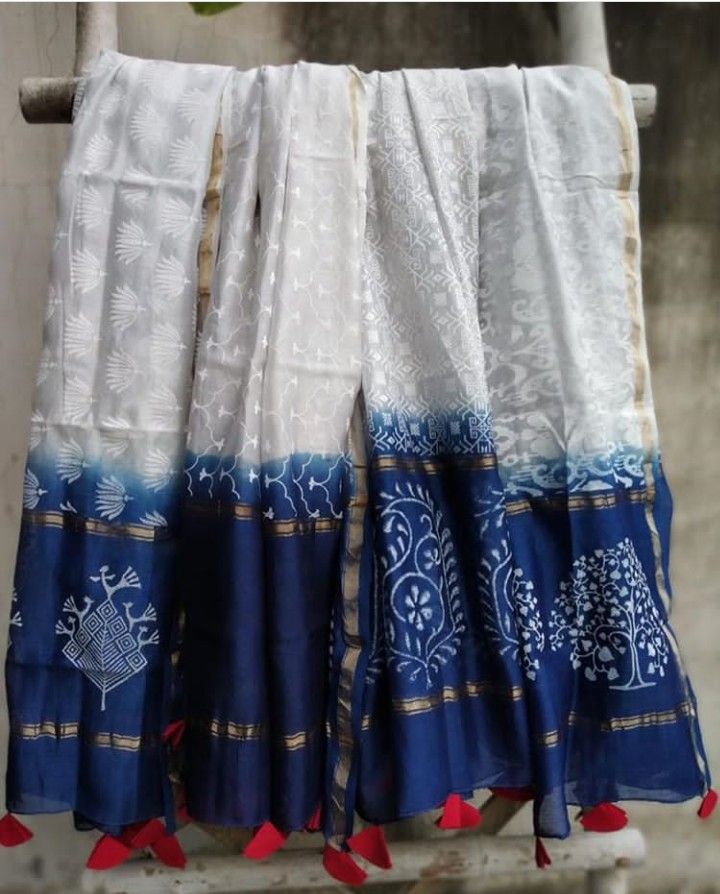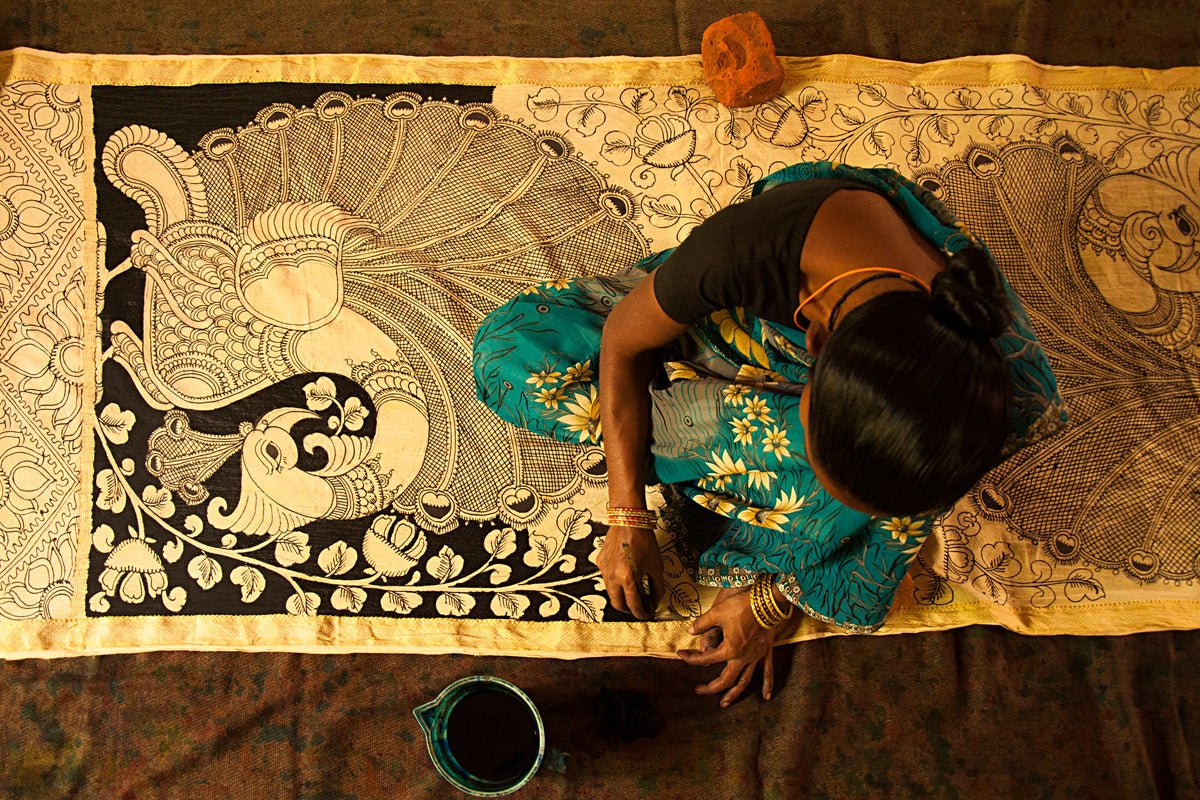
KALAMKARI BLOCK PRINT SAREES- KNOW ALL ABOUT THE ART
India is a land of many art forms, so keeping track of them all is nearly difficult. However, thanks to the art meeting design in the shape of Kalamkari block print sarees, rugs, hand towels, paintings, door covers, bed covers, clothing material, and so on.
The vibrant and bold art of Kalamkari block print continues to be a popular one. Designers continue to rework the technique to suit contemporary fashion designs in Kalamkari block print sarees; ethnic wear and western silhouettes. Block print kalamkari designs continue to fascinate classic and nouveau fashion fans equally with its stunning complexity and detailing and the utilization of natural colors and patterns.
What is Kalamkari?
Using natural colors with a tamarind or bamboo pen, block print kalamkari design is an old hand painting method on canvas, cotton, or silk fabric. The word Kalamkari comes from the Persian word “kalam”, which we all know is known as pen, and Kari, which indicates craftsmanship. This craft entails 23 processes: dyeing, bleaching, hand painting, block-printing, starching, and cleaning. Peacocks, flowers, paisley, and celestial characters from Hindu epics like the Mahabharata and Ramayana are all examples of kalamkari motifs. In recent applications, Kalamkari has been seen representing Buddha and Buddhist art traditions.
Earthy colors like mustard, rust, indigo, black, and green are commonly used in kalamkari art. Natural dyes are extracted from natural sources without chemicals or artificial substances and are used to create colors in Kalamkari art. Natural dyes used as paint colors in Kalamkari are made by combining jaggery, iron fillings, and water and are used to outline sketches. Alum is also used to create natural colors for Kalamkari fabric and cure the cloth. Alum keeps the color of Kalamkari fabric stable. This cloth has a distinct sheen because it's been steeped in resin and cow milk. Trash, seeds, crushed flowers, and various flora create varied effects on the Kalamkari cloth. For optimum outcomes, Kalamkari block print fabric must be dyed again after each application of dye.
The color pattern utilized in Kalamkari also adheres to a set of principles and concepts. Women, for example, are invariably shown in the color yellow, gods in the color blue, and demons in the colors green and red. The most popular background figure is the lotus, and the most common backdrop color is red.
History of Block Print Kalamkari Designs
Because of its colorful motifs and exceptional craftsmanship, Kalamkari blossomed in Andhra Pradesh and was subsequently pushed by Britishers in India in the 18th century. Though this art dates back to 3000 BC, it has been used in the art of storytelling for millennia. Kalamkari art originated when singers, musicians, and painters traveled from village to village using canvas paintings to represent stories. Kalamkari was soon employed on glass panels in Hindu temples, where tales of gods and other legendary narratives were meant. It has the appearance of stained glass artwork found in Christian cathedrals. However, during the Mughal era, this art reached its pinnacle. The Mughal rulers of Golconda and Coramandel provinces patronized this art form and bestowed the title of “QUALAMKAR” to the talented artisans, giving the craft its name.
Types of Kalamkari Art
There are two distinct forms of Kalamkari art in India:
- Srikalahasti style
- Machilipatnam style
Hand-carved traditional blocks are traditionally used to print Motifs in Machilipatnam Kalamkari, with elaborate detailing painted by hand. The Srikalahasti Kalamkari style of painting, on the other hand, is based on Hindu mythology and depicts scenes from epics and folklore. Because it originated in temples, this style has a strong religious connotation.
Two new kinds of Kalamkari patterns have evolved in recent years, bolstering the states where they are made. Gujarat and Andhra Pradesh are two of India's most important states, with two distinct Kalamkari motifs. The Andhra Kalamkari takes design cues from Indian forts, palaces, temples, and animal and bird patterns. On the other hand, Gujarat Kalamkari depicts motifs of mythical characters such as Krishna-Arjuna from the Mahabharata, Lord Krishna, Lord Ganesha, Lord Buddha, etc.
Kalamkari Block Print Sarees
In India, the states of Gujarat and Andhra Pradesh produce the most Kalamkari block print sarees. The patterns on kalamkari sarees can be block printed (kalamkari block print sarees) or hand-painted, and they feature much detail. Each saree tells a story—plant vines, flowers, forts, and animals are sometimes painted in such minute detail that one becomes immersed in the art.
Aside from painting, embroidery, and appliqué work are two additional creative ways to bring Kalamkari stories to life on fabrics. Kalamkari block print sarees are designed to be worn on special occasions. Therefore they pair well with stunning blouse patterns and traditional jewelry.
Summing Up!
Nowadays, Kalamkari is also utilized to make various beautiful decor items and accessories. You can view our best home decor Kalamkari items in the home decor section. Kalamkari, like most traditional crafts, has had its ups and downs especially when it comes to Kalamkari block print sarees. Commercially produced factory-based fabrics represent a severe danger to artisans and Qualamkars. However, the business continues to thrive because many real art enthusiasts and fashion designers still support and nurture this trade.


